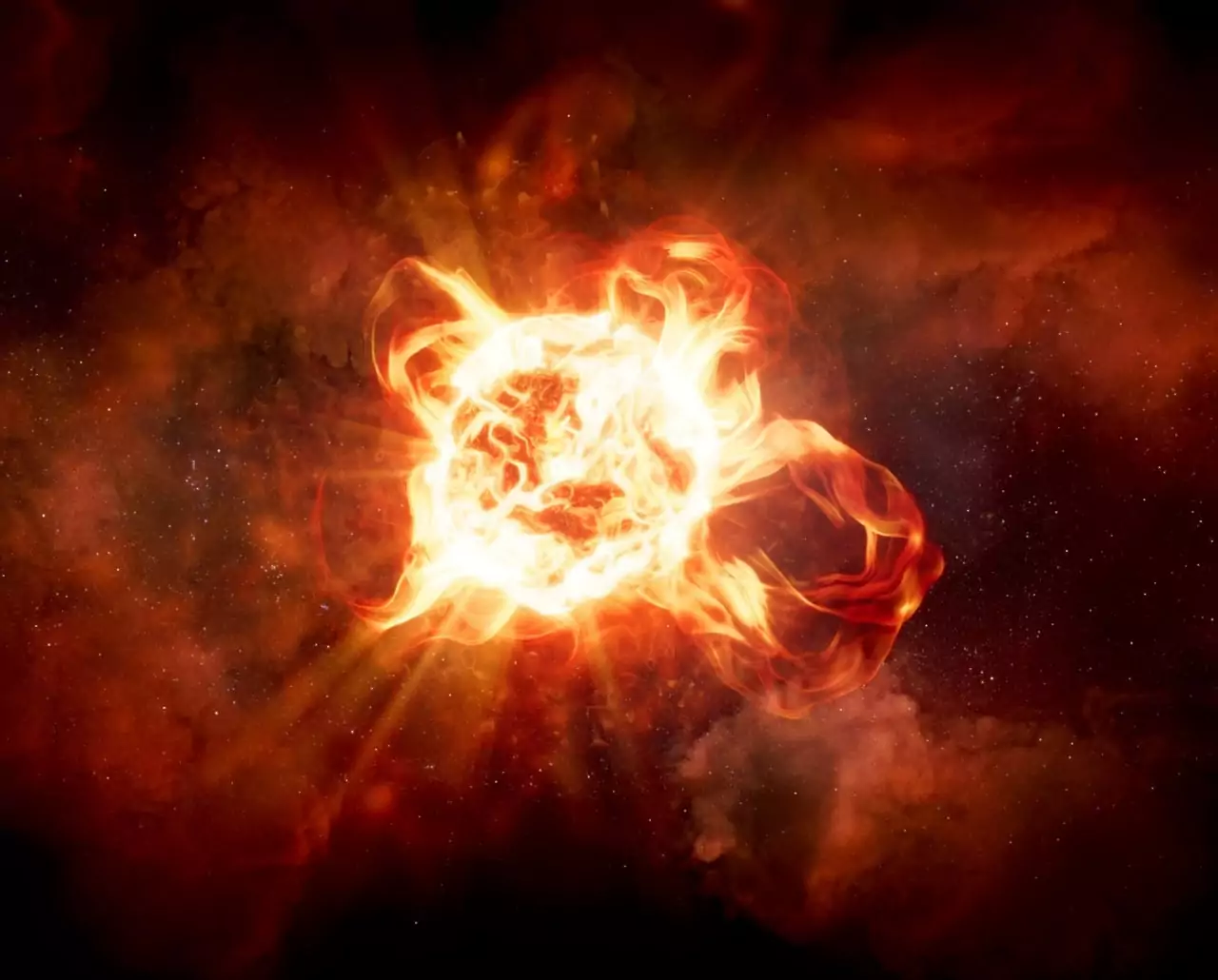This behavior suggests that the star is approaching the end of its life and in the next 100 thousand years it will either explode as a supernova or directly collapse into a black hole.
The huge red supergiant VY of the Big Dog is located at a distance of about 3.9 thousand light-years from Earth. It is 300 thousand times brighter than our Sun, 17 times more massive and 1,420 times larger. Light takes about 6 Earth hours to go around the VY of the Big Dog, and if you put the giant in the center of the Solar System, then this bloated monster would extend beyond the orbit of Jupiter. As Hubble’s observations have shown, VY Big Dog is surrounded by relatively compact nodes of matter that are still quite close to the supergiant and erupted only 100-200 years ago – just at a time when the brightness of the star dropped almost 6 times, making it invisible to the naked eye.
The star began its life as a super-hot, bright blue supergiant, whose mass was 35-40 times the mass of the Sun. After a few million years, when the rate of combustion of thermonuclear hydrogen in its core changed, the VY of the Big Dog passed into the phase of a red supergiant. Gorenje. According to astronomers, there is a possibility that in the future, instead of exploding as a supernova, it may immediately collapse into a black hole.
